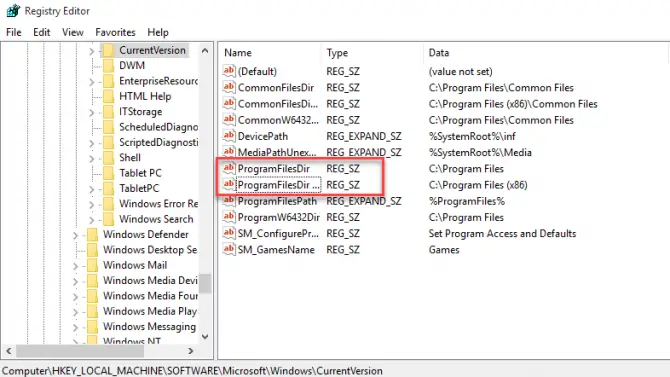Insert a USB with enough storage to hold Windows, and Back Up to the USB drive Shut down your PC, and install the new drive Insert your USB, turn on your computer to boot into the recovery drive. Two methods to install Windows 10 on M.2 SSD drive. Generally speaking, there are two ways to install Windows operating system to M.2 SSD drive. One is cleaning install Windows 10 onto SSD and another one is directly transferring current Windows 10 to SSD drive. Next is a detailed explanation about those two different methods. Once you are done with moving Installed programs to another drive in Windows 10, it is time to change the default location of installed programs. In other words, when you want to install an application, it will always install in the same location that has been chosen as default. By default Windows installs all programs into the C: Program Files and C: Program Files (x86) directories. If the hard drive you have the operating system installed on is running out of space though, or you just want to have the OS on a separate SSD, you might want to consider changing these default installation paths. To install Windows 10 on a new hard drive, just select it and click Next to install Windows 10 on new hard drive. Situation B: If you have got more than one hard drive connected to your PC, you'll be shown a screen with several drives called “Drive 0”, “Drive 1” and so on.
- Installing Windows 10
- Change Windows Installation Drive Letter
- Change Default Installation Drive Windows 10
Installing Windows 10

This article describes how to change the system or boot drive letter in Windows.
Original product version: Windows 10 - all editions, Windows Server 2012 R2
Original KB number: 223188

Summary
Warning
Don't use the procedure that's described in this article to change a drive on a computer where the drive letter hasn't changed. If you do so, you may not be able to start your operating system. Follow the procedure that's described in this article only to recover from a drive letter change, not to change an existing computer drive to something else. Back up your registry keys before you make this change.
This article describes how to change the system or boot drive letter. Usually it isn't recommended, especially if the drive letter is the same as when Windows was installed. The only time that you may want to do so is when the drive letters get changed without any user intervention. It may happen when you break a mirror volume or there's a drive configuration change. This situation should be a rare occurrence, and you should change the drive letters back to match the initial installation.
To change or swap drive letters on volumes that can't otherwise be changed using the Disk Management snap-in, use the following steps.
Change Windows Installation Drive Letter
Note
In these steps, drive D refers to the (wrong) drive letter assigned to a volume, and drive C refers to the (new) drive letter you want to change to, or to assign to the volume.
This procedure swaps drive letters for drives C and D. If you don't need to swap drive letters, name the DosDeviceletter: value to any new drive letter not in use.
Change the system or boot drive letter
Important
This section, method, or task contains steps that tell you how to modify the registry. However, serious problems might occur if you modify the registry incorrectly. Therefore, make sure that you follow these steps carefully. For added protection, back up the registry before you modify it. Then, you can restore the registry if a problem occurs. For more information about how to back up and restore the registry, see How to back up and restore the registry in Windows.
Change Default Installation Drive Windows 10
Make a full system backup of the computer and system state.
Sign in as an Administrator.
Start Regedt32.exe.
Locate the following registry key:
HKEY_LOCAL_MACHINESYSTEMMountedDevicesSelect MountedDevices.
On the Security menu, select Permissions.
Verify that Administrators have full control. Change it back when you are finished with these steps.
Quit Regedt32.exe, and then start Regedit.exe.
Locate the following registry key:
HKEY_LOCAL_MACHINESYSTEMMountedDevicesFind the drive letter you want to change to (new). Look for
DosDevicesC:.Right-click
DosDevicesC:, and then select Rename.Note
You must use Regedit instead of Regedt32 to rename this registry key.
Rename it to an unused drive letter
DosDevicesZ:.It frees up drive letter C.
Find the drive letter you want changed. Look for
DosDevicesD:.Right-click
DosDevicesD:, and then select Rename.Rename it to the appropriate (new) drive letter
DosDevicesC:.Select the value for
DosDevicesZ:, select Rename, and then name it back toDosDevicesD:.Quit Regedit, and then start Regedt32.
Change the permissions back to the previous setting for Administrators. It should probably be Read Only.
Restart the computer.
